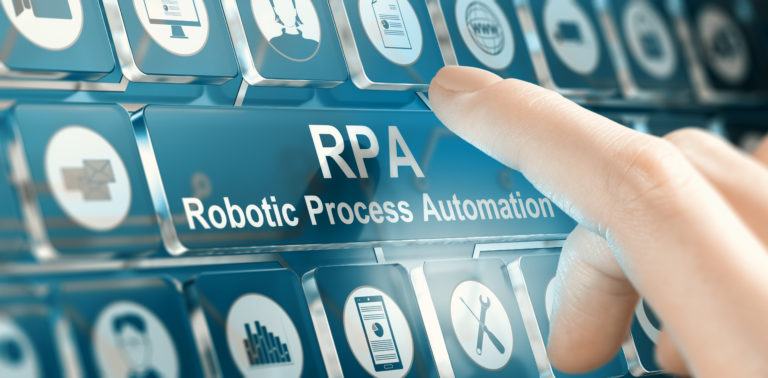Robotic Process Automation or RPA is the next best thing after artificial intelligence and machine learning in the IT industry. This automating technology has brought forth several new and innovative solutions to business tasks.
Research shows that in the future 77% of businesses will use Robotic Process Automation solutions to complete daily transactional tasks.
What is Robotic Process Automation?
As the name suggests, Robotic Process Automation Solutions are used to automate different business tasks and processes that typically need human effort. The Robotic Process Automation system works like a human being- except it can do repetitive and time-consuming tasks without breaking a sweat.
Not only that, but they complete these tasks faster than any human can. This software streamlines business operations to ensure maximum efficiency.
What makes RPA different from other software?
Before understanding how RPA works, let us understand the traditional automation tools. Usually, software developers create a list of different actions to automate a task to the back end. This involves the use of Application Programming Interfaces (APIs) or other scripting languages.
Compared to this, RPA uses its learning capabilities to create its list of actions to carry out. It observes how users carry out tasks and copy it within the graphical user interface (GUI). Tasks such as data entry, shifting data from one place to another, comparing data reports, etc. are all automated by RPA.
Though Robotic Process Automation Solutions software is similar to a GUI, what sets it apart is that it functions across different apps at a time. It pays attention to all sources of information and executes the necessary actions.
Here is an example:
Here is how it works
Robotic Process Automation solutions involve the use of ‘robots’ or specific software, to identify and utilize different applications. These robots allow the manipulation, communication, and processing of data from and to virtually any IT system.
These solutions often involve the deployment of numerous robots at a time. Together, they act as a workforce, operating in the background. Each robot has a virtual workstation from where it completes its tasks.
Such software doesn’t require other than the keyboard and mouse to automate processes. All the work is done digitally and displayed on a screen. You don’t need to add extra coding or make changes to the present setup.
About 56% of businesses have stated that these solutions will give staff more time to focus on strategic work instead of mundane tasks.
The application of RPA or ‘robots’
Applications of such solutions include:
- IT and supply chain management: This for the safe and secure storage and transfer of data.
- Customer services: This includes the chat boxes that pop up on different websites.
- Financial services: Banks and insurance agencies were the first to apply and recognize RPA solutions.
- Government services: Governments are utilizing new technologies to enhance their online presence.
- Other fields: RPA is also used in healthcare, retail, and other sectors.
Benefits of Robotic Process Automation solutions
- Scalable and flexible: They can be applied in any setup, on any device. The applicability ranges over multiple systems.
- Low cost and efficiency: These solutions are cheaper than AI solutions and significantly reduce the chance of human error. This makes the entire process more efficient and less time-consuming.
- Better user experience: Customers will receive better and more accurate services with these solutions. They will get access to better quality data faster.
- Reduces pressure on employees: Automation completes tasks that do not require a lot of human cognition. This makes employees’ jobs easier.
Disadvantages of RPA:
- Job loss: As more processes get automated, more people lose their jobs. Research says that RPA will replace 9% of the workforce over the world.
- Human intervention necessary: Though the processes become automated, Business Process advisors still have to give proper guidance.
As technology progresses, we must progress with it. Robotic Process Automation solutions are a part of these advancements, benefiting businesses all over the world. It is because of its predecessors that RPA is a great application.
RPA gives businesses a competitive edge over others but also impacts human resources. This must be implemented with care.
